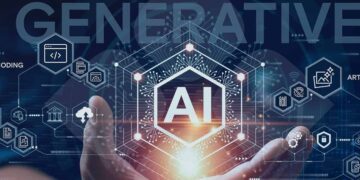In today’s rapidly evolving digital era, organizations across industries are wrestling with complex and large-scale problems ranging from processing enormous amounts of data to optimizing real-time decisions. Traditional computing modalities—whether local servers or cloud platforms—often fall short when it comes to balancing flexibility, performance, and cost. Hybrid computing emerges as the solution by seamlessly integrating on‑premises systems, public and private clouds, and edge devices into a unified, intelligent environment. This combined approach enables businesses to flexibly allocate workloads, optimize resources, and securely manage sensitive data—all while unlocking new opportunities for innovation and efficiency.
In this in-depth guide, we will explore what hybrid computing truly means, how it addresses pressing challenges, key technologies involved, real-world applications, implementation strategies, risks, and future outlook. This article exceeds 2000 words, ensuring rich content for Google AdSense and strong SEO performance.
Understanding Hybrid Computing
Hybrid computing is a strategic technology architecture that blends multiple execution environments—on-premise data centers, private clouds, public clouds, and edge devices—into a single coherent ecosystem. Instead of relying entirely on one platform, businesses choose the most suitable location for each application or workload based on performance, cost, data sensitivity, compliance, and latency requirements.
Why Hybrid Architecture Matters
A hybrid model empowers organizations with:
A. Performance & Scalability – Fast, on-premise processing for latency-sensitive tasks, complemented by cloud scalability for bursting workloads.
B. Cost Efficiency – Memory-heavy or predictable workloads remain local, while transient or seasonal tasks utilize lower-cost cloud resources.
C. Security & Compliance – Sensitive data stays within secure, regulated infrastructure, while benign workloads can run in public clouds.
D. Flexibility & Resilience – Workloads shift dynamically across environments, boosting uptime and business continuity.
Core Components of Hybrid Computing
Effective hybrid computing relies on integrating multiple layers of technology, each playing a crucial role:
A. On-Premise Infrastructure
Enterprises maintain private servers, storage systems, and virtualization platforms (e.g., VMware, Hyper-V) to handle mission-critical or sensitive operations.
B. Private Cloud
Internal cloud stacks (e.g., OpenStack, Google Anthos, Azure Stack) offer self-service, automated provisioning while keeping operations in-house.
C. Public Cloud
Major providers—AWS, Azure, Google Cloud—provide scalable compute, storage, AI services, and serverless offerings for flexible applications.
D. Edge Devices
IoT devices, gateways, and remote servers close to data sources handle low-latency analytics and real-time processing.
E. Integration Software & Tools
Unified control planes (e.g., Kubernetes, Terraform) let teams orchestrate across clouds and on-premise systems with consistent policies.
F. Security & Governance
Identity and access control systems (IAM), encryption, and monitoring tools ensure consistent security policies across environments.
Key Technologies Powering Hybrid Strategy

Hybrid computing harnesses a suite of technologies to link disparate systems intelligently:
A. Containerization & Orchestration
Containers (e.g., Docker, Podman) and orchestrators like Kubernetes enable portable deployment across hybrid environments.
B. Multi‑Cloud Management Tools
Platforms like Anthos, Azure Arc, VMware Tanzu, and Red Hat OpenShift create a unified API and governance layer spanning hybrid resources.
C. Edge-to-Cloud Connectivity
Technologies like 5G, secure VPNs, and mesh networks enable reliable communication between edge nodes and central infrastructure.
D. Data Virtualization & Integration
Solutions like data fabric, ETL pipelines, and APIs allow seamless information flow between systems.
E. AI and Analytics
Machine learning models can be trained centrally but run near the edge for low latency or data privacy.
F. Security Frameworks
Zero‑trust architectures, hardware-based root of trust (e.g., TPMs), and end-to-end encryption help secure hybrid systems.
How Hybrid Computing Solves Major Challenges
Hybrid computing is rapidly becoming essential for addressing modern IT and business needs. Here’s how it tackles specific challenges:
1. Handling Massive Data Volumes
Data generation is exploding—from IoT sensors to customer interactions and genomic research. Uploading everything to the cloud can be costly and slow.
-
On‑premise or edge locations filter and preprocess raw data locally.
-
Only summaries or event alerts go to the cloud for advanced analytics, massively reducing bandwidth and storage costs.
2. Managing Latency-Sensitive Workloads
Applications like autonomous vehicles, AR/VR, and industrial automation require sub‑10ms latency.
-
Edge nodes process time-critical data on-site.
-
Cloud systems are used for in-depth training or large-scale data analysis.
3. Balancing Cost and Budget Constraints
Always-on cloud resources can be expensive.
-
Hybrid architectures allow running long-running processes locally.
-
On-demand cloud capacity handles infrequent spikes.
4. Ensuring Security and Regulatory Compliance
Financial, healthcare, and government sectors face strict data rules.
-
Sensitive data stays on-premise behind firewalls.
-
Public cloud handles less sensitive processing for scale or new service delivery.
5. Achieving Flexibility and Business Continuity
Hybrid architectures let companies reroute workloads in case of infrastructure failure.
-
Software-defined networks and failover setups ensure continuity.
-
Disaster recovery moves workload to alternate cloud locations.
Real-World Hybrid Use Cases
Hybrid computing is more than just theory—it’s actively powering many industry use cases.
A. Financial Services
Banks and trading firms handle sensitive transactions and real-time trading.
-
Risk models and transaction processing run locally for security and low latency.
-
Fraud analytics and compliance reporting use scalable cloud capabilities.
B. Healthcare & Remote Monitoring
Hospitals rely on real-time data for life‑saving decisions and regulatory compliance.
-
Patient data and imaging stored on-premise per regulations.
-
Population studies and AI research use cloud processing.
C. Manufacturing & Industry 4.0
Smart factories require real-time controls and predictive maintenance.
-
On-site edge servers monitor machines and adjust processes instantly.
-
Central cloud systems analyze production trends or optimize supply chains.
D. Retail & Omnichannel
Stores collect consumer behavior and inventory data.
-
In‑store analytics uses edge devices to understand customer patterns.
-
Cloud aggregates data across locations for deeper insights.
E. Media and Entertainment
Live sports, gaming, and VR streaming demand performance and broad audience reach.
-
Local edge servers ingest and transcode streams with minimal latency.
-
Cloud backends deliver global content distribution and personalization.
F. Scientific Research & Education
Large-scale computations, like climate modeling or gene sequencing, need hybrid resources.
-
Campus clusters handle simulations.
-
Cloud burst capacity provides extra compute during peak periods.
Implementation Guide: Embracing Hybrid Computing

Transitioning to hybrid computing requires a structured, strategic approach. Here’s a step‑by‑step framework:
A. Define Workloads & Requirements
Segment your workloads by sensitivity, latency needs, compliance, and cost tolerance.
B. Evaluate Current Environment
Audit infrastructure, apps, data flows, and vendor dependencies to determine what stays local or moves to cloud.
C. Select Hybrid Platform Tools
Pick orchestration tools (Kubernetes, Anthos), API gateways, and middleware for consistent operation across environments.
D. Build a Secure Network Platform
Deploy software-defined networking, VPNs, and zero-trust security to integrate on‑prem and cloud connectivity.
E. Containerize and Modularize
Convert legacy or monolithic apps into microservices or containers for portability and agility.
F. Deploy Monitoring and Governance
Utilize unified dashboards, logging tools, and policy engines to track performance and compliance.
G. Test and Optimize
Run pilots, stress test cross-environment workflows, tune resource placement, and refine cost management processes.
H. Train Staff and Govern Culture
Upskill your IT teams and redefine operational processes to manage hybrid effectively.
Challenges and Risks in Hybrid Deployments
Hybrid computing brings complexity and risk—here’s how to mitigate them effectively:
A. Complexity and Integration Overhead
Multiple environments increase architectural intricacy.
-
Use unified orchestration and automated CI/CD pipelines.
-
Adopt standards (OCI containers, service meshes) for consistency.
B. Interoperability
Not all systems speak the same language.
-
Choose vendor-neutral tools.
-
Standardize APIs and adopt middleware for compatibility.
C. Security Risks
Hybrid systems span many access points.
-
Implement zero‑trust policies.
-
Use centralized identity management (e.g., SAML, OIDC).
-
Encrypt data in motion and at rest.
D. Cost Control
Unmanaged cloud usage can be costly.
-
Tag workloads, set budgets, and optimize idle resources.
-
Apply reserved cloud instances for predictable capacity.
E. Governance and Compliance
Data jurisdiction and audit requirements can be complicated.
-
Maintain consistent policies across environments.
-
Automate compliance through tools like AWS Config or Azure Policy.
Future Trends in Hybrid Computing
The hybrid computing space is evolving rapidly. Here are trends to watch:
A. AI‑Driven Hybrid Orchestration
Intelligent systems will autonomously shift workloads based on costs, performance, and compliance.
B. Greater Edge Auto-Scaling
Edge systems will dynamically scale with local resource demand and intermittent connectivity.
C. Unified Networking Fabric
SD-WAN and 5G integrations will make hybrid networks more resilient and responsive.
D. Serverless Everywhere
Function-as-a-Service APIs will be deployable locally, not just in the cloud.
E. Green Hybrid Architectures
Intelligent workload scheduling will optimize for renewable energy and lower carbon footprints.
Conclusion: Why Hybrid Computing Matters Now
Hybrid computing isn’t just a buzzword—it’s a vital architectural pattern for modern organizations. It blends the best traits of local and cloud computing: performance, scalability, security, and resilience. As data volumes continue to grow and demands change, businesses that master hybrid strategies will achieve cost efficiency, agility, and competitive edge.
This holistic approach drives SEO and monetization value by delivering comprehensive, high‑value content—exactly what Google AdSense rewards. We’ve gone beyond basics, exploring key technologies, real-world use cases, implementation tactics, and emerging trends. With this article, your readers gain deep insight into how hybrid computing resolves today’s biggest IT and business challenges.







